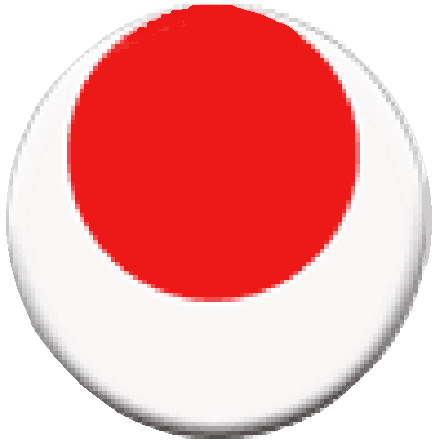|
|
|
In 1936 Master Funakoshi
established the first Institution of Karate in Japan at Zoshigaya Toshima
ward Tokyo. His disciples called the Dojo SHOTOKAN - Shoto being the pen
name Master Funakoshi used to sign his calligraphy and Kan meaning house
or hall. Thus came about the first recognised style of Karateto be taught
in the world. He was then seventy years of age yet he felt his task had
only just begun. After he established the Shotokan Dojo the Master went
about ensuring that Karate become an integral part of the Japanese Budo.
The old Shobo-kai became the NIHON KARATE KYOKAI or translated into English
as JAPAN KARATE ASSOCIATION on March 20 1950. This was the first time
that any Karate organization was formed in Japan. TheAssociation was made
a corporation by the Ministry of Education of Japan on April 10, 1958.
In 1956 the world's first Karate tournament was held the All Japan Grand
Karate tournament, This tournament is held in Tokyo till today. Teams
from India participate in this tournament every year, Dai Sensei Gichin
Funakoshi passed away in 1950 at the age of ninety. Disciples of Master
Funakoshi were invited to teach karate all over the world and it was the
SHOTOKAN STYLE of karate that was first taught not only in Europe but
also in America and South East Asia. Thus J.K.A. spread its branches through
out the world. Today it is the world's largest karate organisation and
the Shotokan sytle the most popular with over ten million karatekas in
more than 100 countries training under its banner a dream of the Master
turned into reality.
There
are no known written records about the origins of the martial art known
as karate-do. It is known however that it came to Okinawa from China.
The origins of this Chinese method of fighting is found in a discipline
set by the Indian monk Boddhidharma who is also known as Lao Tsu in Chinese
and Daruma Taishi in Japanese. The Monk had set forth from the western
shores of India, (Kerala) to China, the destination being the Shaolin
Temple. Boddhidharma was well versed in Kalarippayattu a martial art of
South India, rich in Yogasans or Yogic Postures that bring forth the union
of the body and the mind.
The senior monks at the Temple were in
awe of him as he had traversed the long and difficult journey bearing
up to the demands of both a rough terrain as well as the bandits and wild
animals. They therefore asked him to train the trainee monks .The story
told is that when Boddhidharma put the trainee monks through the paces,
most of them collapsed unable to withstand the rigourous training. It
was therefore felt that in order for the monks to bear the rigours of
travel, they needed to not only have a healthy body and mind, but also
to defend themselves against wild animals and bandits. Boddhidarma was therefore given this task.
The method that he set for the monks is laid down in the Ekkin Sutra of
the Dhamapada or the holy scriptures of Buddhism.
By conjecture we understand that the martial arts of the Shaolin Monastery
also spread with Buddhism along the silk route with the merchants of China,
many of whom also learnt the art from the monks. At the vaious centers
of trade in different countries, the Shaolin Martial Art blended with
the local martial arts and developed into an entirely different form.
More details can be had from the history
section.
Supreme
Master Gichin Funakoshi often considered as the father of Modern Day Karate
was born into a Samurai Family in 1868 the first year of the Meiji Restoration.
Being a weak child his father took him to Azato Yasutsune and Itoso Yasutsune
who were great warriors. During his childhood this art was banned and
at first he was Azato only student. He later trained under a great many
Senseis like Piechin Kiyuna,Niigaki and Sokon Mastumura. By the time he
finished school and became a teacher himself Master Funakoshi was appointed
Chairman of Shobukai the Martial Arts Association of Okinawa. It was only
in 1902 when Shintaro Ogawa the commissioner of schools in the Kagoshima
Prefecture after witnessing an exhibition of Karate submitted a report
to the Ministry of Education in Japan about the benefits of the training
in karate that Karate became a part of the curriculum in schools and began
to be practiced freely in Japan. The martial art aained tremendous popularity
after Master Funakohi performed before the Crown Prince of Japan in 1922.
which led to him being invited to perform at the Royal Court in Japan.
The response to his demonstration in Japan was so great that he was persuaded
to stay on. Amongst those who persuaded him to stay on was Master Jigoro
Kano the founder of Judo who gave him the necessary help to teach the
art for the first time in Japan.
It
was in Japan when Master Funakoshi was leading the research group on karate
at the keio University that he prposed the change of name in order to
make the art totally Japanese in nature. iIn the proposal he gave the
name 'Dai Nippon Kempo Karate-do or Great Japan Fist Method
Empty Hand Way. In the new name he changed the Calligraphy symbolising
"to" or "China". (This charectar can also be pronounced as kara)
to "Kara" or Empty and thus gave the art the name of Kara-te-do in short
| Recommended reading: |
- Rentan Goshin Toudi Jutsu : by Master Funakoshi published later as Karate- jutsu.
- Karate Do Kyohan. : by Master Funakoshi published as the master text
- Karate-do My life : by Master Funakoshi
|
|

